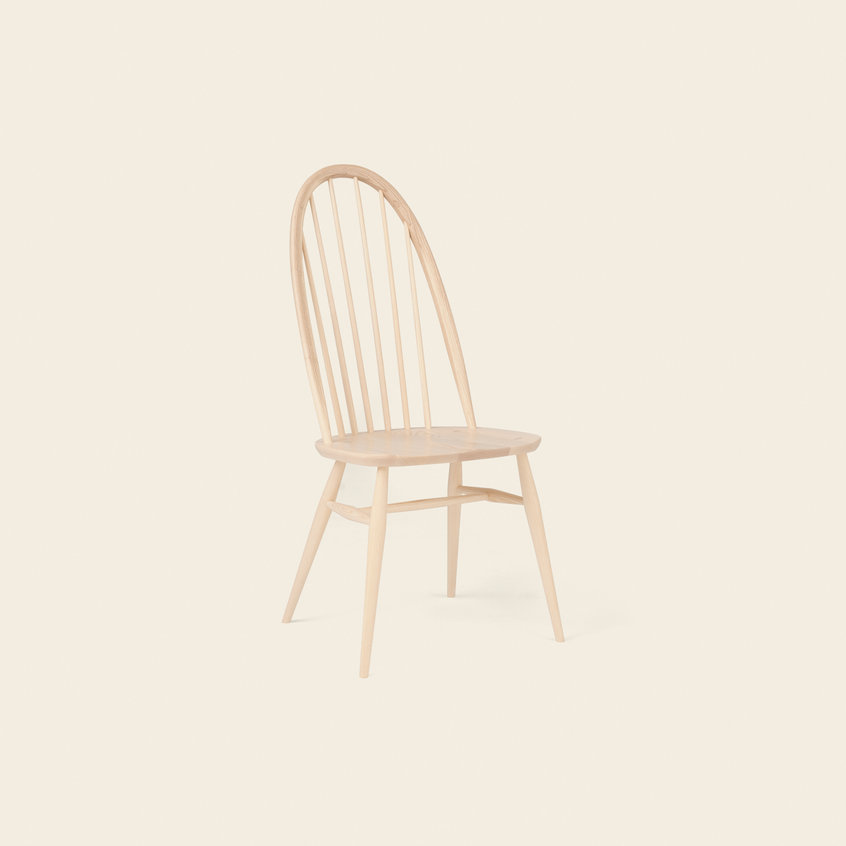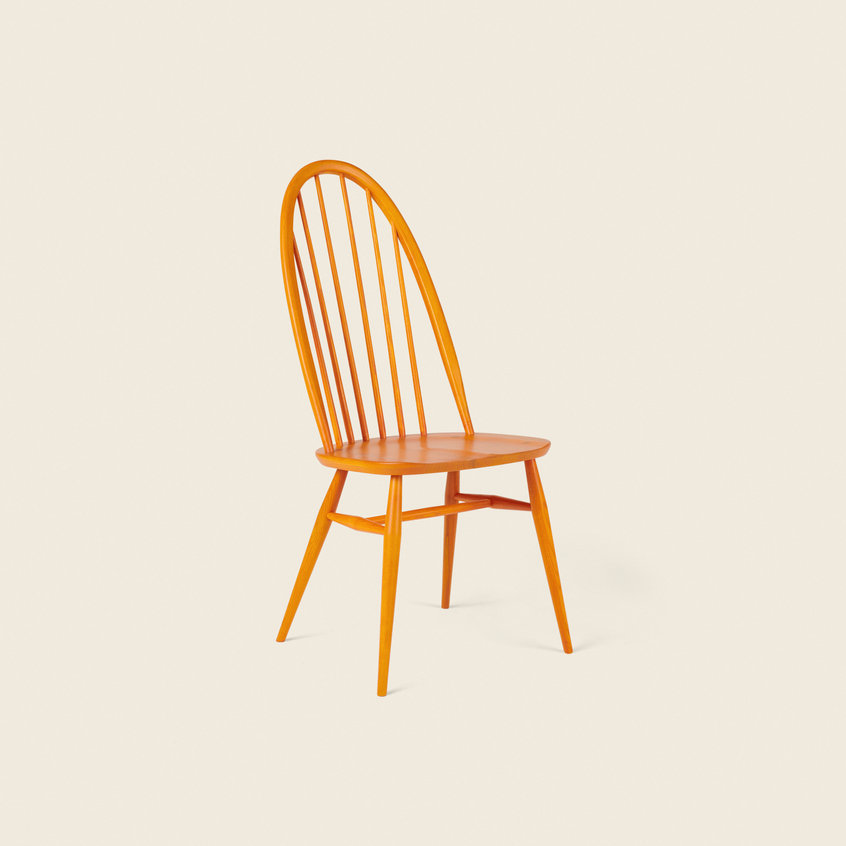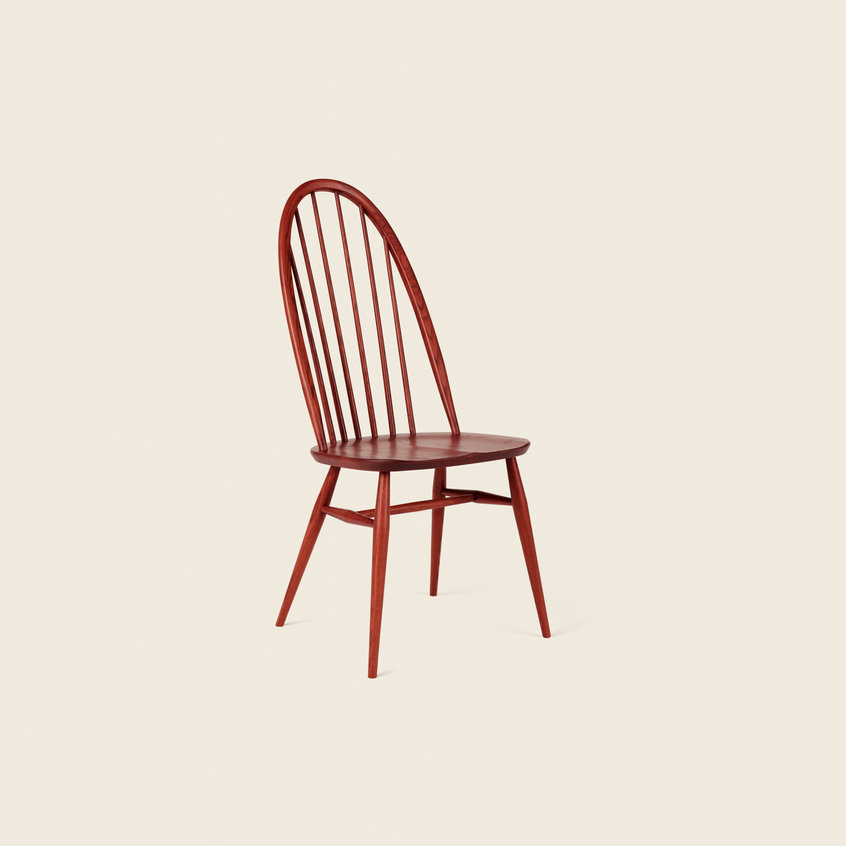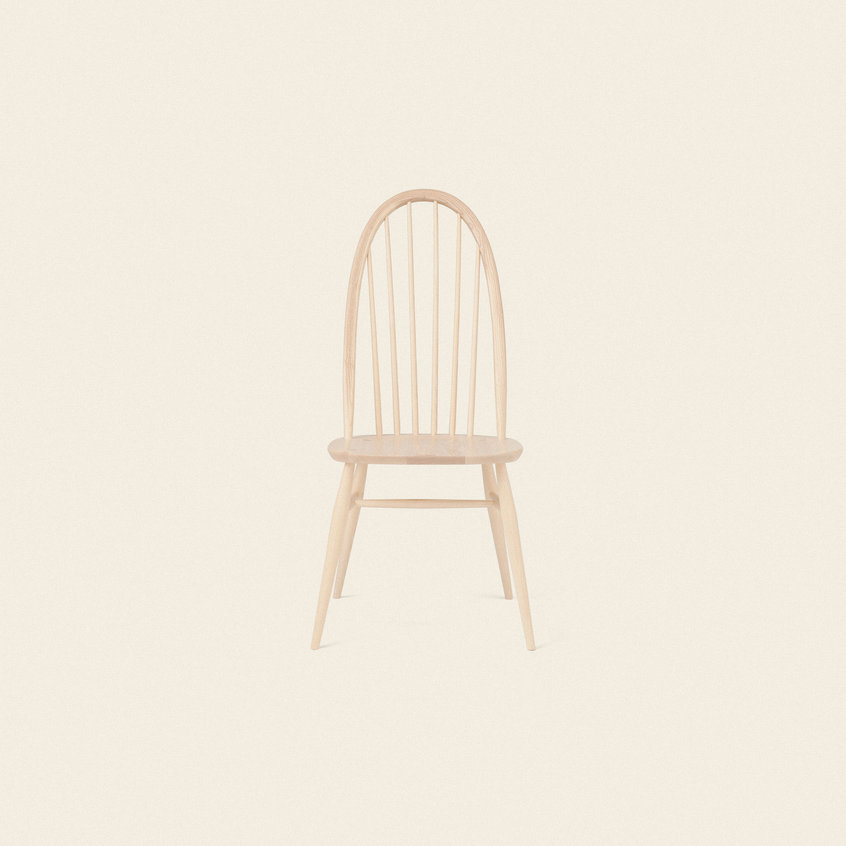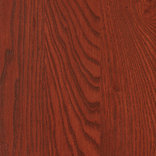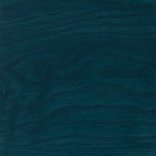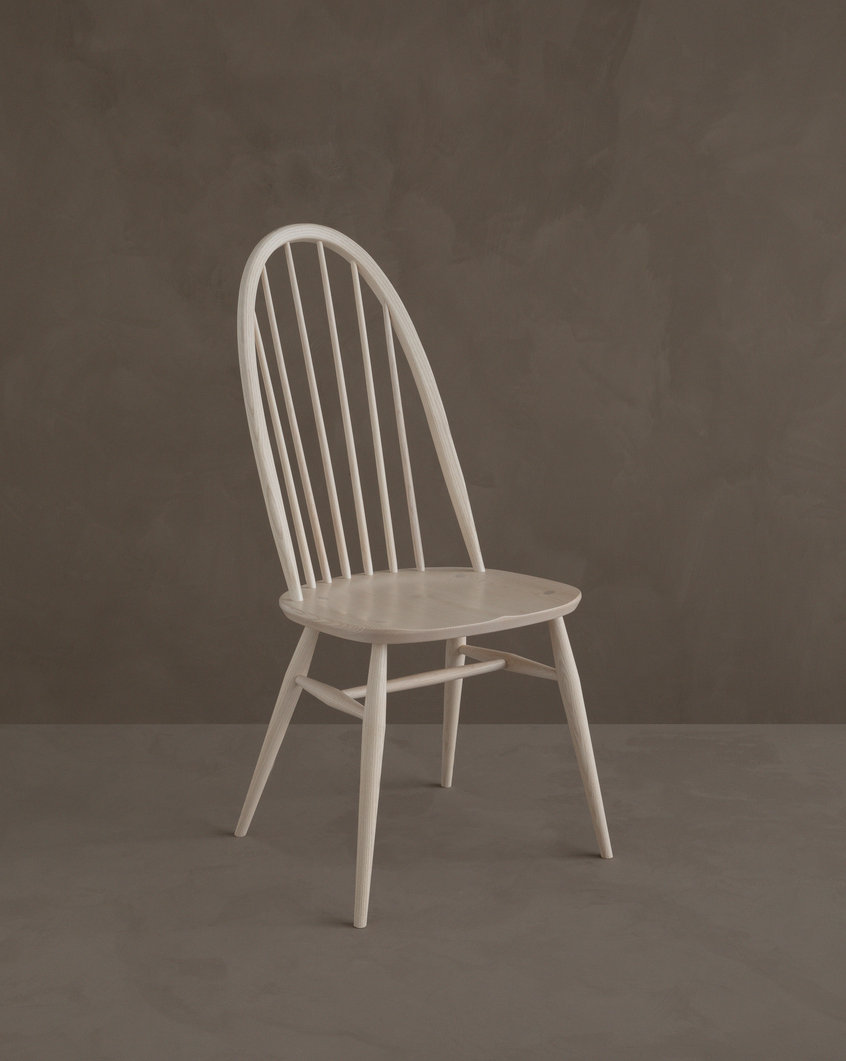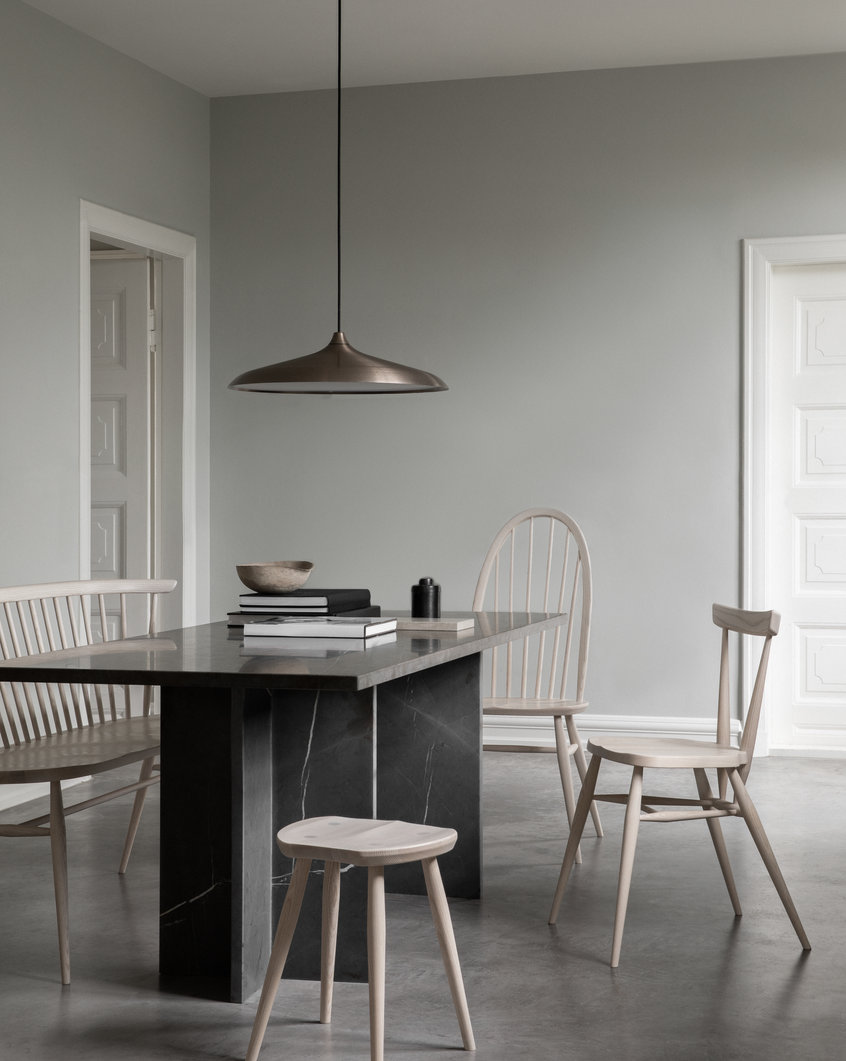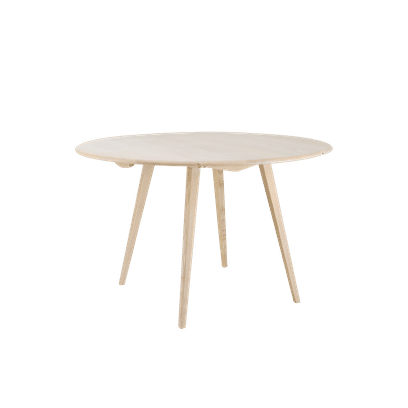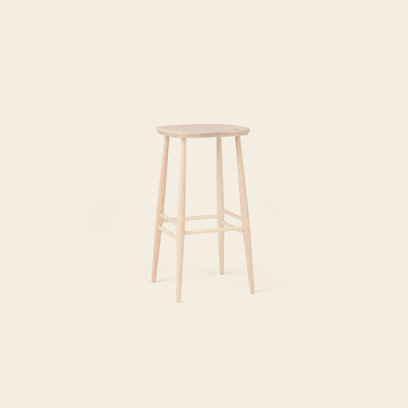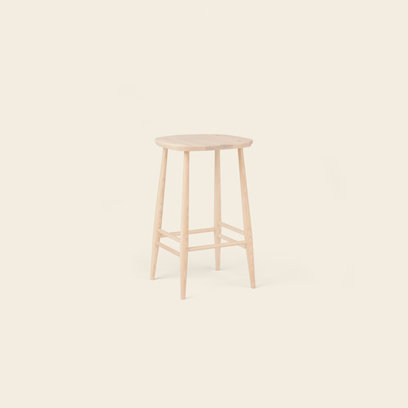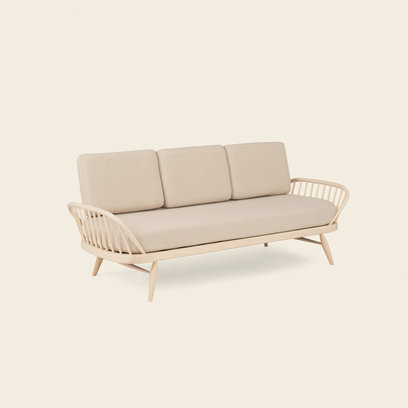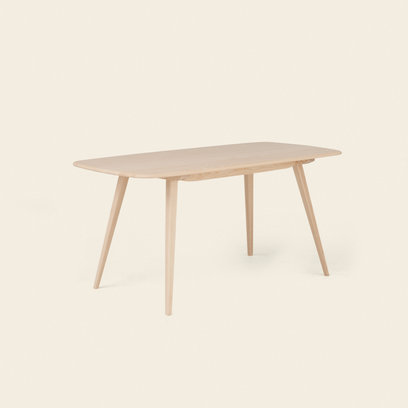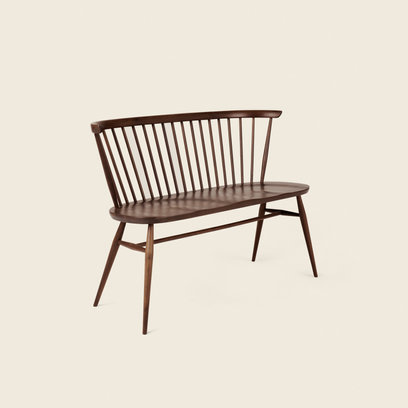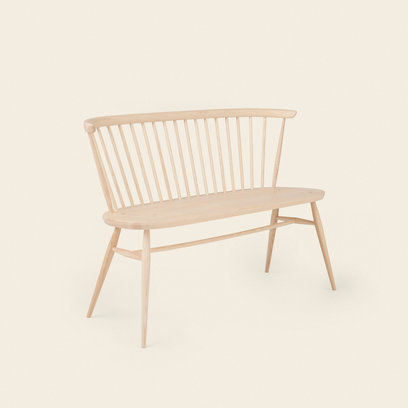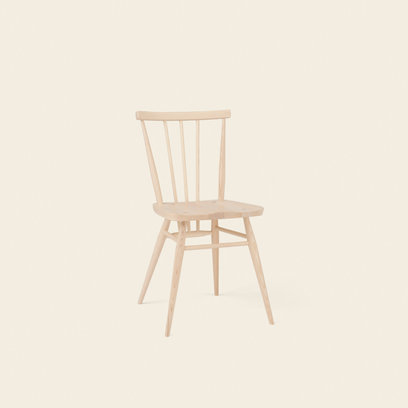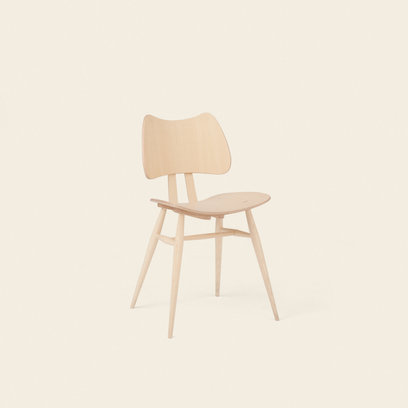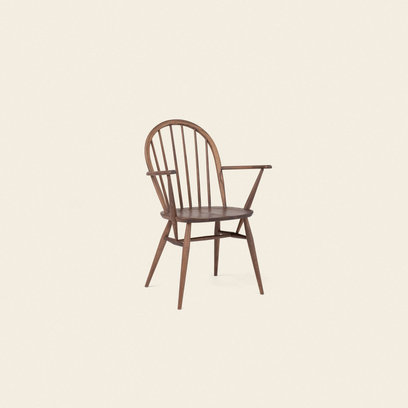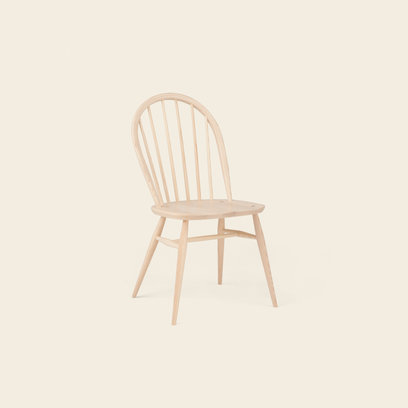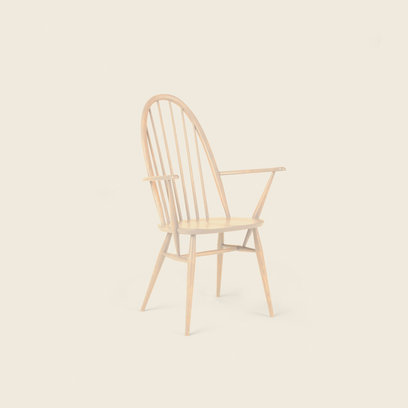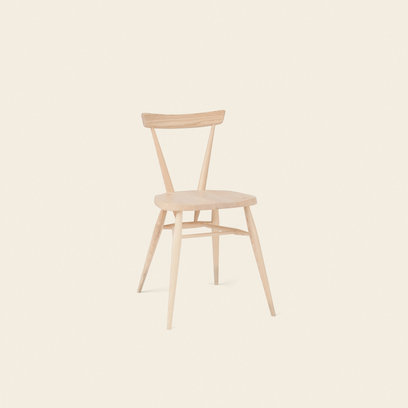Utility High Back Chair
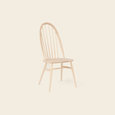
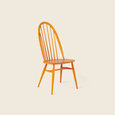
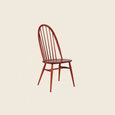
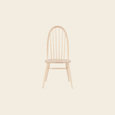
Designed by Lucian R Ercolani, 1945
A celebrated classic, the UTILITY HIGHBACK CHAIR encapsulates the pared-back simplicity of Lucian Ercolani’s formative work, inspired by the purity of Windsor-style furniture. Equally well-received today as it was in 1945, the welcoming form of the UTILITY HIGHBACK CHAIR has the power to elevate the atmosphere and occasion of everyday dining rituals.
Meticulously crafted and honed to minimalistic perfection, the UTILITY HIGHBACK CHAIR boasts a classic Windsor backrest with six, finely-carved spindles. Carved into a tall arc, a steam-bent ash bow encases the spindle structure, uniting the chair’s elements in a grand, sweeping curve.
Forged in solid ash timber, the UTILITY HIGHBACK CHAIR is available in nine protective finishes, including a warm natural finish and the new MODERN TONES series by Christian Møller Andersen.
Product Description
Designed by Lucian Ercolani, the philosophy behind the UTILITY COLLECTION is simple — enduring, timeless design, constructed using humble, straightforward materials and hand-built to last for generations. With these values in mind, Lucian Ercolani launched the iconic series in 1945, marking a new and defining chapter in British design history. A celebrated classic, the UTILITY HIGHBACK CHAIR encapsulates the pared-back simplicity of Lucian Ercolani’s formative work, inspired by the purity of Windsor-style furniture. The UTILITY HIGHBACK CHAIR’s clean, structural integrity and tactile, softly rounded form allow comfort to take the forefront — resulting in an attractive, ergonomically-designed seat that facilitates rest and wellbeing.
The UTILITY HIGHBACK CHAIR is an indulgent addition to the home, seamlessly enhancing and blending with modern and contemporary dining interiors. Equally well-received today as it was over seventy years prior, the welcoming form of the UTILITY HIGHBACK CHAIR has the power to elevate the atmosphere and occasion of everyday dining rituals.
Meticulously crafted and honed to minimalistic perfection, the UTILITY HIGHBACK CHAIR boasts a classic Windsor backrest with six, finely-carved spindles protruding from its base. Carved into a tall arc, a steam-bent ash bow encases the spindle structure, uniting the chair’s elements in a grand, sweeping curve. Hammer-shaft joints and gently tapered, outturned legs provide a supple yet dependable profile — allowing the UTILITY HIGHBACK CHAIR’s lithe form to shine through its honest build. Lastly, traditional wedge and tenon joinery combined with a supportive H-frame inserted underneath the UTILITY HIGHBACK CHAIR’s saddle seat enhance the overall strength and durability of the chair’s construction.
Forged in solid ash timber, the UTILITY HIGHBACK CHAIR is available in nine protective finishes, including a warm natural finish and the new MODERN TONES series by Christian Møller Andersen.
Specifications
Product Code
7875
Country of Origin
UK
Product Dimensions
Width: 49cm
Depth: 60cm
Height: 103cm
Seat Height: 45cm
Seat Depth: 40cm
Product Weight
5.5kg
Assembly
Fully Assembled
Packaged Dimensions
112cm (L) x 68cm (W) x 59cm (H). 9.5kg
